We take a walk every day, sometimes through urban and industrial areas. Other days find us on prairie or woodland trails. Everywhere we’re spotting an abundance of summer fruit being devoured by birds, woodchucks, chipmunks, and even deer.
Last August 10 a terrible derecho roared through our area, felling about 70% of mature trees. It seemed tragic but a year later vegetation has responded with enthusiasm in former shady places now sunlit. These include berries. Brambles: Newly sunny woods are filled with first-year black raspberry and blackberry canes. Next year there’ll be an abundance of berries. These are delicious food for people and wildlife. We like them fresh.
Here are few other species of berries. Some are human edibles. Others leave for the birds.
Munching
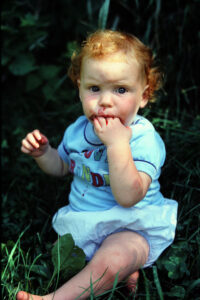
The sweet, but bland mulberries are children’s favorite.
Mulberries: These deliciously sweet, but bland, fruits have a long bearing season that’s mostly in June but lingers well into July. Robins just love them. So do many other birds……and children. Mulberries are a delicious underused human food. One of our favorite dishes is rhubarb mulberry pie.
Cherries: Many birds love domestic cherries. Our trees were almost ready to pick when a family of raccoons did the picking for us. No cherry pies this year. Wild black cherries are common. They’re edible to humans but are small, have a big pit, and are usually bitter. They’re hardly worth the effort to pick and process so we leave them for the birds to enjoy.
Leave These for the Wildlife
Chokecherries: They ripen in late June and into July. These pucker up any human trying to eat them, but birds love snacking on them.
Elderberries: These shrubs love trail and roadside sun and produce bunches of berries in late summer and into fall. Some people go to the trouble of making wine or jam from them but we leave them for the birds to enjoy.
Poison Ivy: Another berry to leave to the birds is poison ivy. This favorite of birds is how the plant spreads when the birds drop seeds. Leaves of three? Let them be!
- Berry canes emerge in the sun.
- We bring along a small bag to bring home berries.
- Birds spread poison ivy by eating the berries and pooping the seeds out later.
Dogwoods: These berries aren’t human food but make delicious bird chow. They ripen late and stay on the shrub through winter. Want to find bluebirds or robins on a cold January day? Find a patch of dogwoods that still have frozen berries clinging to them.
Winter Food
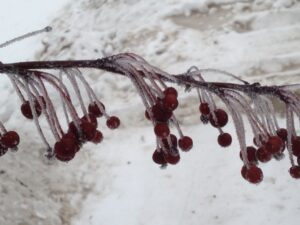
Waxwings flock to winter berries.
Highbush Cranberries: Look from late July on as they ripen in mid to late summer. A wildlife favorite, birds and chipmunks forage happily in the shrubs. Some berries linger into winter and often wintering waxwings greedily forage on the berries. Deer come by and munch both the leaves and berries.
When we set off on a summer walk, we stuff a bag or two into our pockets. Then, if we discover a blackberry patch, we’ve got a way to carry a few handfuls home.

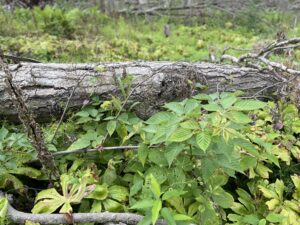
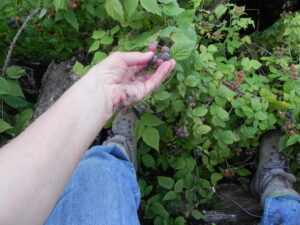
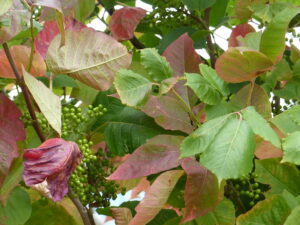

Fun read; thanks!
My grandmother used to bake mulberry gooseberry pies. The blandness of one countered the sourness of the other and made for a pretty good pie. Large mulberry trees line the road near our house. The birds are loving them, as evidenced by the big purple “bombs” on our driveway and siding.